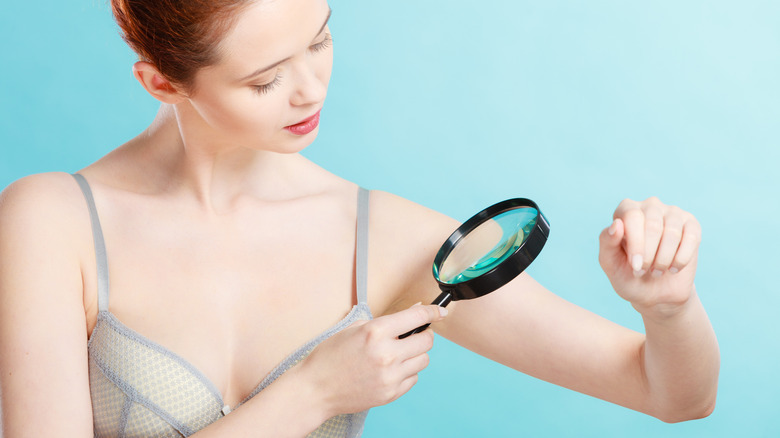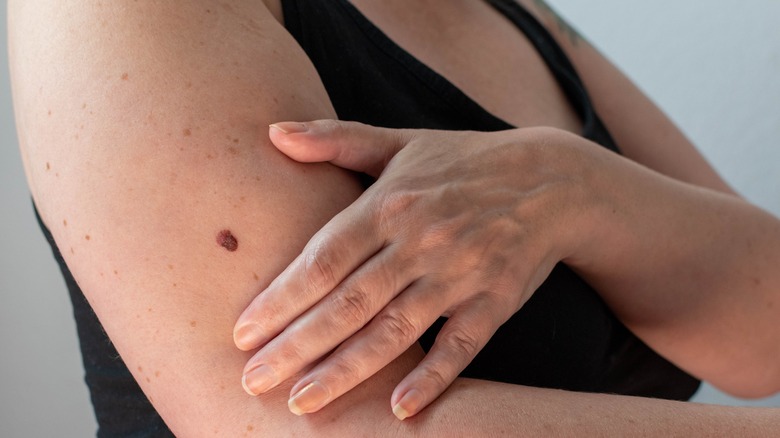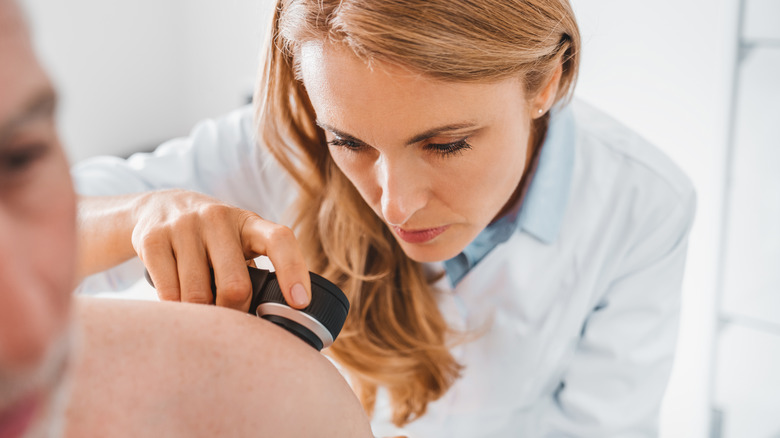What Does 'ABDCE' Stand For In Diagnosing Skin Lesions?
As a society, we spend a lot of time and money on making sure our skin looks clear and youthful. Before the year's end in 2022, the United States alone spent 19.2 billion dollars on skincare products (per Statistica). And yet, skin cancer affects more Americans than any other form of cancer, according to the Skin Cancer Foundation. With 20% of people receiving a skin cancer diagnosis before they reach 70, it's no surprise that skin cancer is considered a growing epidemic in our country. Luckily, when detected early enough, the five-year survival rate for melanoma sits comfortably at 99% showing that being proactive about our skin health – and not just its appearance — can quite literally be lifesaving.
M Health Fairview explains that skin lesions is a broad term used to describe any area of the skin that is abnormal in comparison to the skin around it. That could include anything from moles and freckles to rashes, bumps, and dry patches. While oftentimes skin lesions can be normal, there are instances in which they can be deadly. In this article, we're going to show you a trick that can help you identify potentially dangerous skin lesions, and it's as easy as ABCDE.
What is the ABCDE method
Moles — an extremely common form of skin growth — often present as black, brown, or pink spots on the skin. They are caused by clusters of pigment-forming cells called melanocytes (per M Health Fairview). Moles can be either flat or raised. While most of them are harmless, they have the potential to develop into skin cancer over time.
The ABCDE method is a diagnostic assessment developed to identify the occurrence of melanoma, a type of skin cancer that begins in melanocytes, thus affecting moles and freckles in particular (per American Cancer Society). While M Health Fairview points out that the ABCDE method was developed to diagnose melanoma specifically (and not other types of skin cancer) the American Cancer Society notes that melanoma is particularly important to look out for. This particular form of skin cancer has a reputation for spreading throughout the body when it's not caught and treated in a timely fashion.
How to perform a skin self-exam using ABCDE method
While the American Cancer Society hasn't specified how often our skin should be examined, the general consensus is that once a month should suffice. To get eyes on every last inch of yourself, utilize a small mirror that you can hold up to view hard-to-see places, and a large mirror you can stand in front of. Your first skin self-exam should be all about identifying existing freckles or moles. For every month thereafter, make note of any changes that occur.
When remembering what to look for, just think ABCDE (per Centers for Disease Control and Prevention (CDC)). A stands for "asymmetry". If you drew a line down the center of your mole, would the two sides look very different? If so, there might be cause for concern. B represents "border". Healthy moles have very clear borders. If your mole has a jagged appearance that seems to trail off into the skin, it's a good idea to call your dermatologist. C is for color. If one mole has more than one color within it, this could be a sign of melanoma. D stands for diameter. If your mole is bigger than the size of a pea, it's time to get it checked. And E reminds us to keep an eye on the mole's evolution. Any changes that occur in an existing mole can be a sign of danger and should be reported to your doctor immediately so that they can assess you.



